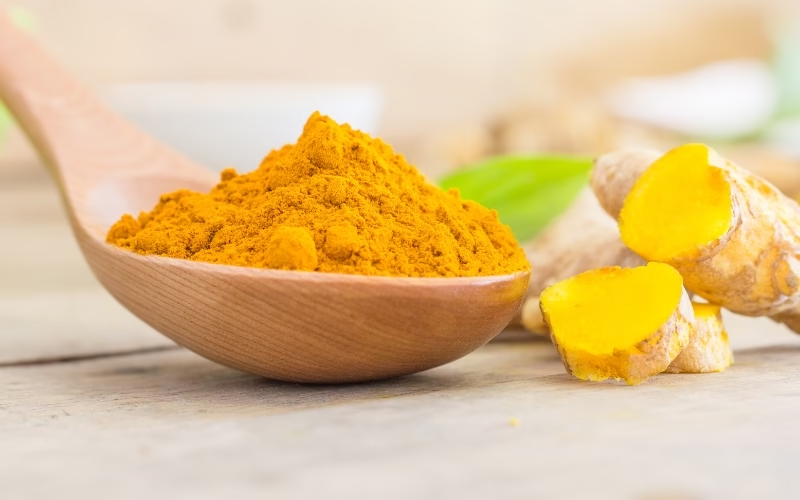Have you ever felt a mental fog descend after a heavy meal? Or noticed how a bout of gut discomfort can leave you feeling irritable and sluggish? It’s not just a coincidence.
Our bodies are incredibly interconnected, and at the heart of this connection is a fascinating, two-way communication system between your digestive system and your brain: the Gut-Brain Axis.
This intricate network of nerves, hormones, and chemical messengers means that what happens in your gut can profoundly influence your mood, mental clarity, and overall well-being.
Mindful Meals: How Turmeric, Red Pepper, and Your Gut Talk to Your Brain
An intelligent approach to feeling your best, both physically and mentally, involves nourishing this powerful axis. While a balanced diet and healthy lifestyle are foundational, certain natural ingredients have been celebrated for centuries for their ability to support this vital connection.
Let’s explore how a trio of potent spices—turmeric, red pepper, and black pepper—can play a significant role.
The Gut-Brain Axis: Your Body’s Inner Conversation

Imagine your gut as a second brain, constantly chatting with the one in your head. This “axis” is a complex superhighway of communication. Your gut microbiome, the trillions of bacteria living in your intestines, produces neurotransmitters (like serotonin, which influences mood) and other compounds that directly signal your brain.
Conversely, stress and emotions from your brain can impact your gut function. Supporting a healthy gut environment is therefore crucial for not just physical comfort, but also for mental sharpness and emotional balance.
Inflammation in the Mental Equation
Scientists are increasingly exploring the idea that inflammation may be a contributing factor to depression, a concept often referred to as the inflammation hypothesis of depression.
A growing body of evidence suggests that a chronically activated immune system can lead to the release of pro-inflammatory cytokines, which are chemical messengers that can travel from the body to the brain. Once in the brain, these cytokines are believed to interfere with neurotransmitters like serotonin and dopamine, both of which are critical for regulating mood.
They may also affect key neural circuits and brain regions involved in emotional processing. This research does not suggest that inflammation is the sole cause of depression, but rather that it may be a significant underlying physiological factor for some individuals, complicating the traditional view of the condition.
Spices: Potent Partners for Gut & Mind
Nature provides powerful allies in this journey towards optimal gut-brain health.
- Turmeric’s Golden Glow: We’ve explored the vibrant history of turmeric, but its star compound, curcuminoids, remains a key player. Known for their powerful properties, curcuminoids work at a cellular level to help modulate inflammatory responses throughout the body, including the gut. A calmer gut environment means fewer inflammatory signals impacting the brain, contributing to overall well-being.
- Red Pepper’s Refreshing Kick: The active compounds in red pepper, known as capsaicinoids, offer more than just a culinary thrill. Many report a feeling of mental and physical refreshment, almost a “clearing out” sensation, after consuming red pepper. This isn’t just anecdotal; capsaicinoids are known to influence various physiological processes, including metabolic function. When your body feels stimulated and less sluggish, your mind often follows suit, contributing to a sense of invigoration and clarity. It can also help with appetite regulation and many epidermal patches for sale use capsaicin as the primary active ingredient for mild pain.
- Black Pepper: The Bioavailability Booster: This everyday spice is more than just a flavor enhancer; it’s a critical partner to both turmeric and red pepper. Black pepper contains piperine, a compound that dramatically enhances the absorption of beneficial compounds like curcuminoids and capsaicinoids. Without piperine, many of the active ingredients in these spices would pass through your system largely unabsorbed. Black pepper ensures that your body can actually utilize the full potential of these powerful plant compounds, making their combined effect truly synergistic.
When these three spices work together, they create a powerful team. Turmeric helps calm the inflammatory chatter, red pepper invigorates and supports metabolic harmony, and black pepper ensures your body gets the most out of both. This synergistic effect supports a healthy gut environment, which in turn fosters clear communication along the Gut-Brain Axis.
A Holistic Path to Total Harmony
Cultivating a healthy Gut-Brain Axis is a holistic endeavor. It involves mindful food choices, stress management, and a focus on nourishing your body from the inside out. Incorporating these powerful spices into your cooking is a delicious step, but for those seeking consistent and concentrated support, a high-quality turmeric supplement with maximum curcuminoids can be invaluable.
By understanding how your gut and brain communicate, and by leveraging the natural power of ingredients like turmeric, red pepper, and black pepper, you’re not just enhancing your meals—you’re making an intelligent investment in a clearer mind, a more comfortable body, and a life lived with greater vitality.



